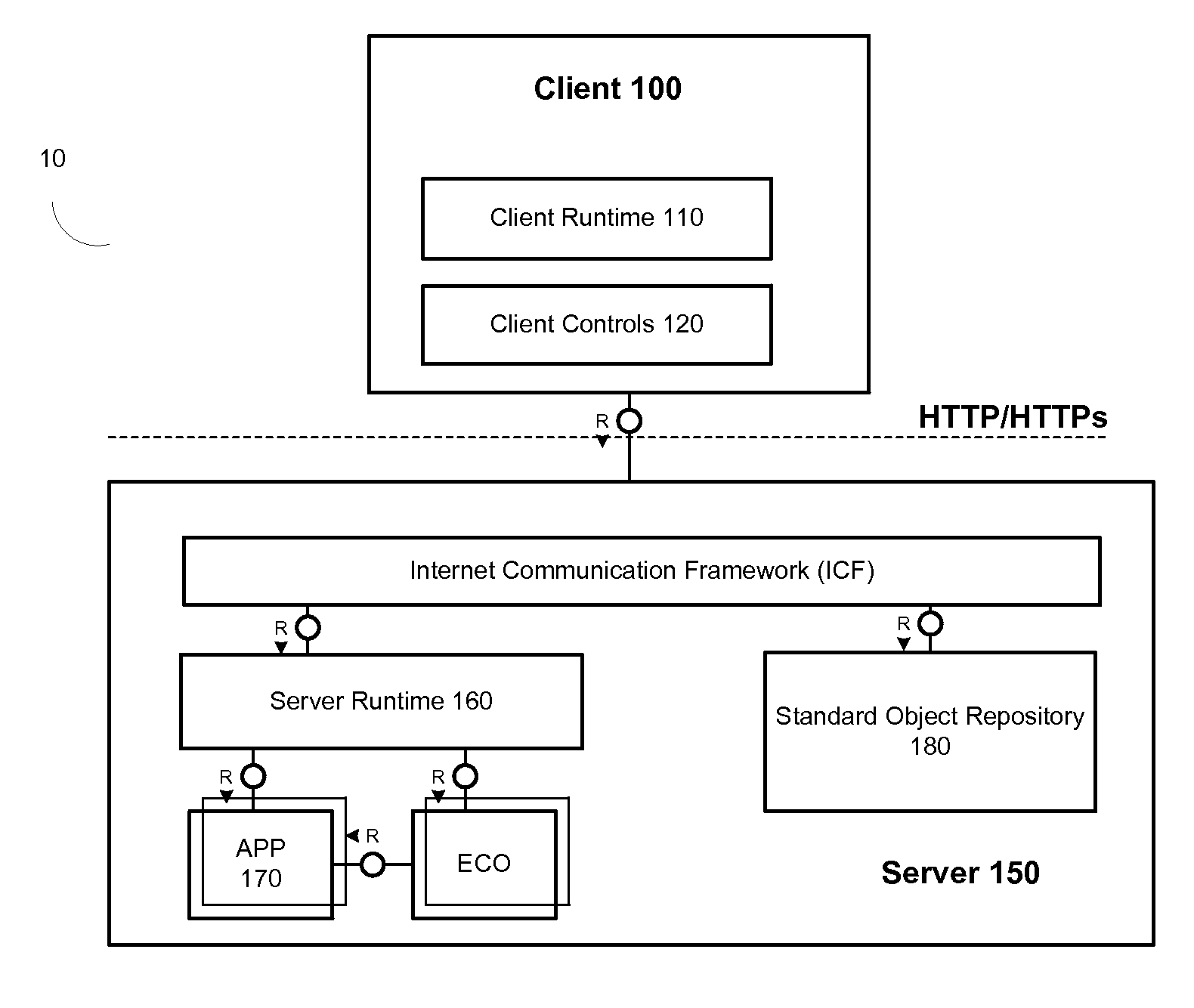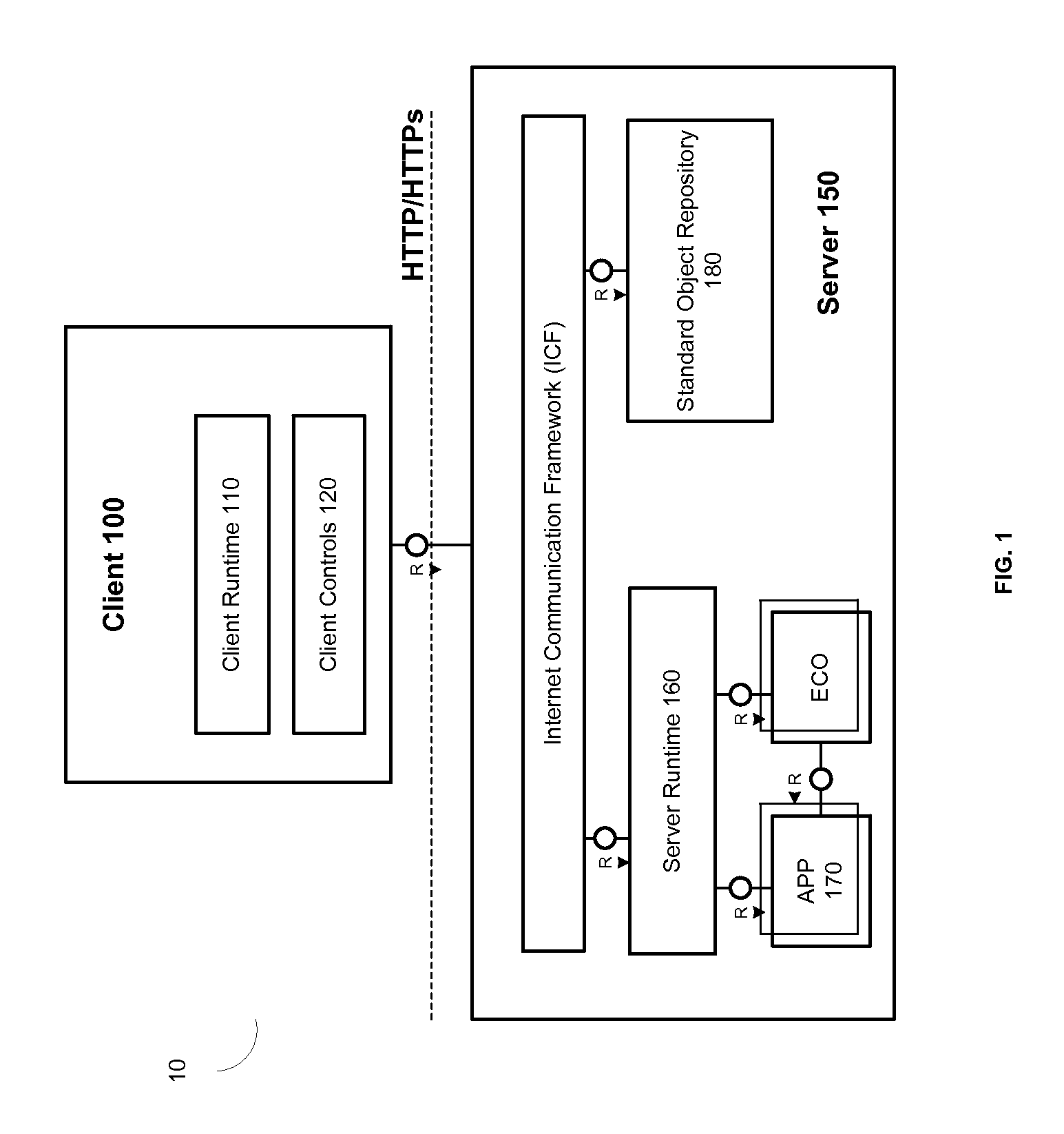Logical data model abstraction in a physically distributed environment
a physical distributed environment and data model technology, applied in the field of client/server based applications and client based data models, can solve the problems of considerable computing power of such devices, and absolute computing power pale in comparison to the computing power of a server or server farm
- Summary
- Abstract
- Description
- Claims
- Application Information
AI Technical Summary
Benefits of technology
Problems solved by technology
Method used
Image
Examples
Embodiment Construction
[0013]FIG. 1 is a block diagram of a system 10 for executing an application using a client-server architecture. As shown in FIG. 1, system 10 includes a client computer 100 and a server computer 150. The client computer 100 runs a client runtime 110 that includes one or more controls 120. The server computer 150 runs a server runtime 160 and a backend application 170. The client runtime 110 generates and renders a graphical user interface (GUI) that allows a user of client computer 100 to graphically interact with and control the backend application 170 on server 150. The server runtime 160 communicates with both the client runtime 110 on client computer 100 and the backend application 170 on server 150. The server runtime 160 reads, writes, interprets, and translates data from backend application170 into one or more declared UI component objects (see, FIG. 2) using a data model that is common to both the client runtime 110 and the server runtime 160. Preferably, the client runtime ...
PUM
 Login to View More
Login to View More Abstract
Description
Claims
Application Information
 Login to View More
Login to View More - R&D
- Intellectual Property
- Life Sciences
- Materials
- Tech Scout
- Unparalleled Data Quality
- Higher Quality Content
- 60% Fewer Hallucinations
Browse by: Latest US Patents, China's latest patents, Technical Efficacy Thesaurus, Application Domain, Technology Topic, Popular Technical Reports.
© 2025 PatSnap. All rights reserved.Legal|Privacy policy|Modern Slavery Act Transparency Statement|Sitemap|About US| Contact US: help@patsnap.com



